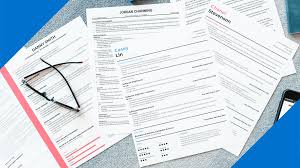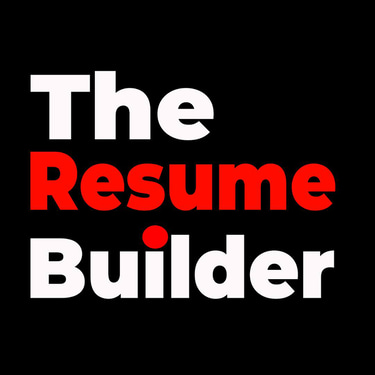Why a Perfect ATS-Compliant Resume Isn’t Enough to Land Interviews
Abhishek Kundu
1/29/20254 min read


A Case Study
Amit Sharma, a mid-senior management professional with over 12 years of experience in operations and project management, had been actively applying for roles but wasn’t receiving interview calls despite having an ATS-compliant resume. He had optimized his resume with the right keywords, structured it correctly, and tailored it to job descriptions. However, after applying to over 100 job postings, he received only a handful of responses. Frustrated, Amit sought professional guidance to analyze what was going wrong.
Scenario 1: The ‘Apply & Wait’ Approach
Issue: Over-Reliance on Job Portals
Amit was primarily applying through online job boards like LinkedIn, Naukri, and Indeed, assuming that a strong resume would automatically get shortlisted. However, he didn’t realize that many mid-senior level jobs are filled through networking and referrals, rather than just job postings.
What Went Wrong?
Applied to 50+ jobs per week but received only generic rejection emails.
No direct follow-up with recruiters or hiring managers.
No engagement with industry professionals to get referrals.
Solution:
Amit started using LinkedIn strategically—engaging with industry leaders, commenting on relevant posts, and sending personalized messages to hiring managers.
Instead of blindly applying, he began requesting informational interviews to understand hiring needs before applying.
He joined professional groups and forums to increase visibility.
Result: Within three weeks, Amit received two interview invitations through direct referrals, without even applying online.
Scenario 2: Ignoring LinkedIn Optimization
Issue: A Weak LinkedIn Presence
Amit had a well-structured resume, but his LinkedIn profile was outdated—his headline was vague, his experience lacked detail, and he had minimal activity on the platform. Since recruiters often check LinkedIn before reaching out, his weak profile created a negative impression.
What Went Wrong?
His LinkedIn headline was just “Operations Manager”, instead of a compelling, keyword-rich title.
No recommendations or endorsements from past colleagues.
No activity on LinkedIn—no posts, no engagement, and no articles.
Solution:
Amit updated his headline to “Operations & Project Management | Process Optimization | Agile & Lean Methodologies”.
He added quantifiable achievements in the experience section.
He started posting industry insights and sharing relevant articles.
He requested recommendations from past managers and colleagues.
Result: His profile views increased by 300%, and within a month, recruiters started reaching out directly for relevant roles.
Scenario 3: Generic Applications Without Customization
Issue: One-Size-Fits-All Resume & Cover Letter
Amit was using a single resume for all job applications without tailoring it to specific job descriptions. Even though his resume was ATS-friendly, it lacked customization for each role, which made it less impactful.
What Went Wrong?
His applications lacked a personalized cover letter.
He didn’t tweak key skills and achievements based on job descriptions.
His resume highlighted broad skills instead of role-specific expertise.
Solution:
Amit started customizing his resume for each job by aligning his skills and achievements with the job description.
He included a tailored cover letter for senior-level roles, addressing hiring managers directly.
He used a results-driven approach, showcasing measurable impact in previous roles.
Result: His application-to-interview ratio improved from 1 in 50 to 1 in 10, significantly increasing his chances of landing interviews.
Scenario 4: Not Leveraging Recruiters Effectively
Issue: Passive Interaction with Recruiters
Amit believed that recruiters would automatically reach out if his resume was strong. However, he failed to actively build relationships with them.
What Went Wrong?
He wasn’t reaching out to recruiters on LinkedIn.
He didn’t follow up after applying for jobs.
He didn’t ask for recruiter feedback on his applications.
Solution:
Amit started connecting with recruiters in his industry, sending personalized messages.
He followed up on applications with polite inquiries about the hiring process.
He asked for feedback on rejected applications, gaining insights for improvement.
Result: He built strong recruiter relationships, leading to exclusive job referrals and interview invitations.
Scenario 5: Poor Interview Preparation
Issue: Lack of Readiness for Interview Calls
Amit finally started getting interview calls but struggled to convert them into job offers. He wasn’t preparing adequately for behavioral and situational questions.
What Went Wrong?
He focused only on technical aspects and ignored soft skills.
He didn’t research the company thoroughly before interviews.
He wasn’t structuring his answers using frameworks like STAR (Situation, Task, Action, Result).
Solution:
Amit practiced mock interviews with a mentor.
He prepared answers for common behavioral and competency-based questions.
He researched company culture and recent projects before interviews.
Result: His interview performance improved, leading to final-round selections in multiple companies.
Scenario 6: Not Showcasing Thought Leadership
Issue: No Personal Branding
Amit wasn’t positioning himself as a subject matter expert in his field, making him less attractive to potential employers.
What Went Wrong?
He wasn’t sharing insights or writing about his expertise.
He had no speaking engagements or professional contributions.
He lacked a portfolio or case studies to showcase his impact.
Solution:
Amit started writing LinkedIn articles on industry trends.
He participated in webinars and panel discussions.
He built a personal website showcasing his projects and achievements.
Result: His industry credibility grew, leading to job offers through direct employer outreach.
Key Takeaways
A great resume alone won’t get you hired—strategic networking and LinkedIn optimization are crucial.
Senior-level roles rely more on referrals—job portals are not enough.
A customized approach works best—tailoring resumes and cover letters increases interview chances.
Engage with recruiters actively—build relationships for better job opportunities.
Interview preparation is key—practice soft skills and research companies thoroughly.
Showcase your expertise—thought leadership and personal branding can attract employers.
Final Thoughts
A perfect ATS-compliant resume is just the first step. If you’re struggling to land interviews despite a strong resume, it’s time to revamp your job search strategy. Optimize your LinkedIn, engage in networking, and tailor your applications to stand out in a competitive job market.
Need help with job search strategies, resume optimization, or LinkedIn branding? Get in touch with us in +91-8981360947 OR email - theresumebuilderindia@gmail.com!
Expert in
Professional Resume Writing Company in Kolkata, West Bengal
Professional Resume Writer in Kolkata, West Bengal
ATS Resume Writing in Kolkata, West Bengal
GET IN TOUCH
theresumebuilderindia@gmail.com
+91 89813 60947
© 2015. All rights reserved by Abhishek Kundu Resume Writing Co.
abhishek@atsresumewriting.in
